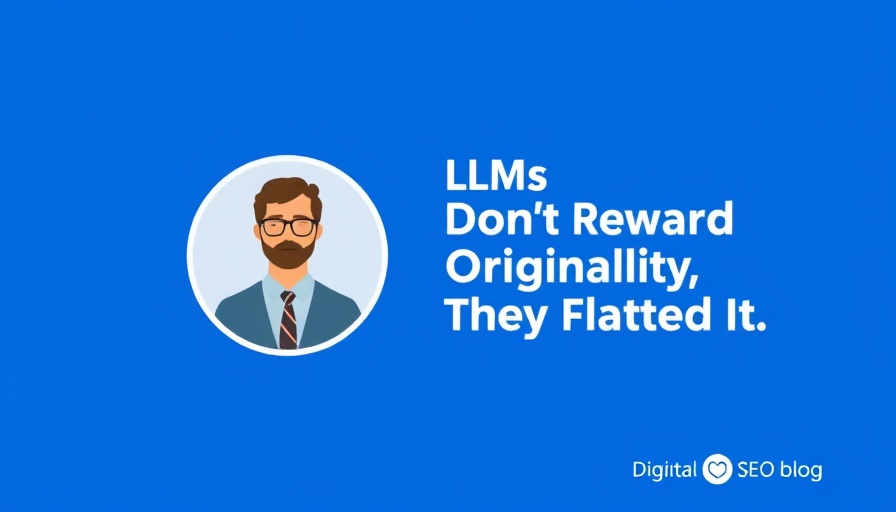
Why Originality Matters—Or Doesn’t—in AI Marketing
In a world where being unique is hailed as one of the highest virtues in marketing and technology, we find ourselves grappling with a harsh truth in the age of AI—originality may not be the golden ticket many of us have long believed. As marketers, we are conditioned to innovate, push boundaries, and seek out that elusive concept that no one else has thought of yet. But what if I told you that unique ideas often falter in AI-driven landscapes, where consensus reigns supreme?
AI, particularly in its large language model (LLM) forms, tends to flatten these original ideas rather than elevate them. They ignore the singular brilliance of a coined term or framework unless it catches the airwaves of popular opinion first. This prompt poses an important question: How can we navigate this landscape without losing our unique voice?
The Reality of AI's Consensus-Driven Approach
When one of my recent projects involved devising a new concept around multilingual SEO—a framework I dubbed the Ahrefs Multilingual SEO Matrix—I had high hopes for its impact. The term even ranked first for its exact match keyword. Yet, the irony became clear when I tested various LLMs. While the models had access to my article and its corresponding image, they failed to give credit to the original work or creators. Instead, they were inclined to rephrase existing knowledge surrounding multilingual SEO while glossing over the innovation I was trying to introduce.
This phenomenon highlights a glaring issue in current AI practices. It is as if these systems overlook newly minted ideas, waiting instead for them to be disseminated widely before acknowledging them. For many online marketers, particularly those who rely on their thought leadership to build authority, this can feel discouraging. You could create groundbreaking content but still remain invisible to LLMs until others echo your ideas.
Learning from Experience: How to Overcome AI Flattening
The experience led me to formulate some actionable insights for fellow marketers desperate to retain some semblance of originality. Here are some strategies:
- Extend Your Reach: Boost the visibility of your original ideas by sharing them across networking platforms. This includes forums, social media, podcasts, and guest blogging—essentially anywhere you can generate conversation around your concept.
- Engagement is Key: Foster discussions around your work. Engagement can translate to citations from others who regard your ideas as valuable. Encourage peers to reference and distribute your concepts.
- Collaborate for a Crowd Effect: Work on joint projects with other thought leaders. The more avenues that spread your idea, the different colors it takes can attract the AI’s attention.
The Emotional Impact of Being Ignored by AI
If you’re in marketing, you understand the isolating feeling of seeing a brilliantly crafted idea languish in obscurity. Think about the late nights spent perfecting your work and how disheartening it is when AI misses the mark on recognizing your contributions. It’s akin to pouring your heart into something only to have it judged by its popularity rather than its merit. The emotional toll of this reality cannot be understated, especially in a field where creativity is often equated with success.
The Future: Embracing AI Without Losing Yourself
As we move forward, the key takeaway is that originality need not be sacrificed in this AI-dominated environment; instead, we must learn to play the game differently. The goal is to fully adapt while retaining our unique voices. With careful navigation and a strategic approach, we can ensure that our contributions aren’t flattening into the background but rather resonate and thrive, even under the weight of AI’s consensus-driven summarization.
Take Action!
Now is the time for online marketers to rethink how we position our innovative ideas. Rather than relying solely on the hope that AI will appreciate our original thoughts, we must actively build networks that boost their visibility. Share your unique ideas broadly, encourage conversations, and collaborate to be heard in an AI-driven world. Embrace creativity—but do so in a way that ensures you don’t become a solitary voice lost in the crowd.
 Add Row
Add Row  Add
Add 




Write A Comment